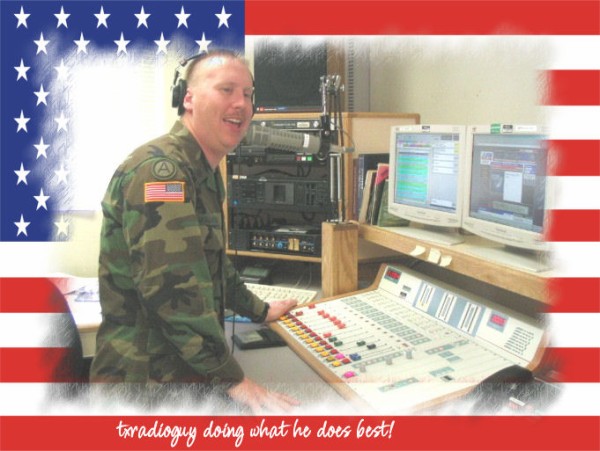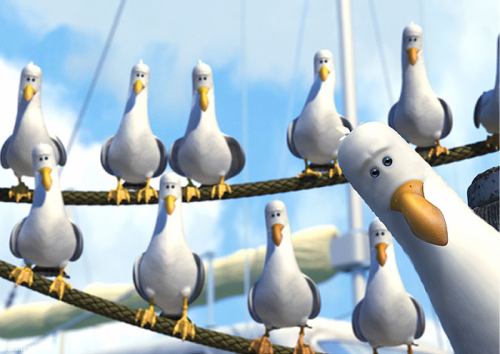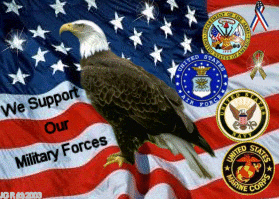|
The FReeper Canteen
looks at
The Distinguished Service Cross |
|
 Establishing Authority Establishing Authority
The Distinguished Service Cross was established by order of President Woodrow Wilson, as promulgated in War Department General Orders Number 6 of January 12, 1918, and formalized by Act of Congress on July 9, 1918 (Public Law 193, 65th Congress).
Effective Dates
The Distinguished Service Cross has been in effect since April 6, 1917; however, under certain circumstances the Distinguished Service Cross may be awarded for services rendered prior to April 6, 1917.
Criteria
The Distinguished Service Cross may awarded to a person who, while serving in any capacity with the Army, distinguishes himself by extraordinary heroism not justifying the award of a Medal of Honor. This extraordinary heroism must take place while the individual is engaged in an action against an enemy of the United States; or while he is engaged in military operations involving conflict with an opposing foreign force; or while he is serving with friendly foreign forces that are engaged in an armed conflict against an opposing armed force in which the United States is not a belligerent party. The act or acts of heroism must be so notable and involve risk of life so extraordinary as to set the individual apart from his comrades.
Order of Precedence
The Distinguished Service Cross is worn after the Medal of Honor and before all other decorations.
Devices
Additional awards are denoted by oak leaf clusters.
Designers
The Distinguished Service Cross was designed by First Lieutenant Andre Smith and modified by Captain Aymar Embury, both of the Camouflage Section, 40th Engineers, at Camp American University. Embury's final design was sculpted by John R. Sinnock of the Philadelphia Mint.
First Recipients
The first awards of the Distinguished Service Cross were made on March 18, 1918, to three soldiers from the 1st Division: Second Lieutenant John Newport Greene of the 6th Field Artillery and to Sergeant William M. Norton and Private Patrick Walsh, both of Company I, 18th Infantry.
Description and Symbolism of the First Style Distinguished Service Cross

Obverse
The first style Distinguished Service Cross was struck in bronze and is one and seven-eighths inches in height and one and five-eighths inches wide. The suspender was originally part of the overall design of the medal; however, it proved unworkable and was replaced by a ball through which the suspension ring was passed. The central feature of the medal is an eagle centered on the cross over a four-pointed diamond outline with one point centered in each arm of the cross and with a five-pointed star at each point of the diamond. The eagle's wings are displayed and extend into the upper re-entrant angles of the cross. The arms of the cross are heavily decorated with oak leaves, and below the eagle in the lower re-entrant angles of the cross is a scroll bearing the inscription, E PLURIBUS UNUM.
The eagle represents the bald eagle and symbolizes the United States. The five-pointed stars are taken from the United States flag and refer collectively to the United States, just as the inscription on the scroll refers to the fact that the United States is one nation composed of many states. The oak leaves stand for strength and courage. The inscription on the scroll is taken from the Great Seal of the United States and refers to the United States as one nation composed of many peoples.
Reverse
In the center of the cross is a rectangular plaque containing the inscription, FOR VALOR. The plaque rests on a circular wreath of laurel leaves in the center of which appears a decorative staff. The laurel wreath represents victory and achievement.
Ribbon

The ribbon was designed by Captain Andre Smith and has a central field of blue (one inch wide) edged in white and red, with the red forming the outermost colors of the ribbon. The colors of the ribbon are those of the flag and stand for purity (white), sacrifice (red), and high purpose (blue).
Description and Symbolism of the Second (Current) Style Distinguished Service Cross
Obverse
The second style Distinguished Service Cross is a modification of the first style; it has a sculptured inner cross mounted on a flat cross with decorative, fluted edges. At the end of each arm is a small ornamental scroll topped by a ball. An eagle with displayed wings is centered on the cross and behind the eagle is a circular wreath of laurel (which replaces the diamond in the first style cross). The laurel wreath is tied at its base by a scroll which extends into the lower re-entrant angles of the cross and contains, FOR VALOR.
Reverse
The reverse also features a sculptured inner cross on a flat cross, with the same decorations at the edges that appear on the obverse. The back and tips of the eagles wings are also shown. Centered upon the cross is a circular wreath of laurel with a bowknot at the bottom from which flows the back of the scroll, joining the arms of the cross. In the center of the wreath is a rectangular plaque with decorative edges, which is blank for engraving the recipient's name.
Ribbon

Same as for the first style Distinguished Service Cross. Information found here. |
|
  |
Pilot honored — 33 years late

Army vet receives awards for acts of heroism in Vietnam By Robert Burns
Associated Press WASHINGTON — From one former Army helicopter pilot to another, Gen. Richard Cody presented the military's second-highest award for valor on Friday to Stephen E. Lawrence in recognition of his exceptional acts of heroism during a harrowing rescue mission in Vietnam.

Gen. Richard Cody, left, presents Stephen Lawrence with Distinguished Service Cross. "This is more than I ever expected," Lawrence said.

Lawrence Jackson, Associated Press |
The award was approved 33 years ago but never presented to Lawrence because of bureaucratic slip-ups.
"This is more than I ever expected," Lawrence, 56, said in accepting the Distinguished Service Cross during a ceremony in the Pentagon's Hall of Heroes. "It may be a little late, but this is fabulous."
Cody, a career helicopter aviator and now the vice chief of the Army, quoted chilling words from one of the men whom Lawrence rescued from a downed aircraft on Oct. 5, 1971, while braving enemy fire.
"This is the one experience that I have relived hundreds of times in my dreams," the unidentified survivor was quoted as saying. "There was no doubt in my mind that I was going to die that day. I truly believed that anyone attempting to rescue us would also be facing certain death."
Lawrence was 28 days from finishing his tour of duty in Vietnam with the 135th Aviation Company when, as the pilot of a UH-1M "Huey" helicopter gunship, he chose to attempt a rescue of another American helicopter that had gone down in flames in an enemy stronghold near the Cambodian border.
According to the official Army citation, Lawrence twice landed his gunship near the burning aircraft before he and his crew managed to get the downed crew aboard and fly away under heavy fire.
"Chief Warrant Officer Lawrence's utter disregard for his personal safety, his devotion to duty and outstanding flying expertise enabled the crews of both aircraft to return to safety," the citation says.
Within days he had departed Vietnam, returned to Fort Lewis, Wash., and been discharged from the Army. He now lives in Clearwater, Fla.
"Steve, what you did over three decades ago mattered very much to the people whose lives you saved and to generations of their loved ones," Cody said. It also matters to today's aviators, he said, and it was the kind of heroism that sparked Cody's own interest in an Army career.
"Television images of gunship pilots like you flying in Vietnam inspired a young West Point cadet to be a gunship pilot. It was pilots like you that motivated me to be a pilot," he said.
Before Lawrence left Vietnam his commanding officer told him that he intended to nominate him for the Medal of Honor, the nation's highest honor for military valor. That was the last Lawrence heard of the matter until last summer, when he had dinner with fellow Vietnam vet Roger Almquist, who was surprised to hear Lawrence had been awarded nothing beyond the Distinguished Flying Cross, which was presented to him two days after the rescue mission.
Almquist decided that should not be allowed to stand. He began researching the matter and soon discovered that the completed paperwork for the Distinguished Service Cross, dated May 1, 1972, was in Lawrence's files in Army records at the National Archives. For unexplained reasons the Army never notified Lawrence of the award's approval.
He remained in the Army National Guard for another seven years and served for 15 years in the Coast Guard, retiring from the Coast Guard Reserve in 1994.
Lawrence is one of 846 soldiers who received the Distinguished Service Cross for Vietnam service, according to Army records. As far as he can tell, he never was nominated for the Medal of Honor.
Looking back, Lawrence feels fortunate to have survived that last battle of his military career.
"We were some lucky guys that day," he said. Link to story. |
|
|
Please remember: The Canteen exists to support our military heroes serving all over the world and their families. There are lots of places around Free Republic to talk about politics and debate your views. Please try to keep it out of the Canteen. We want to keep the Canteen a place where the guys and gals who are serving can sit down, kick their shoes off and relax and not have to keep their guard up.
Thanks for your help!
Now go out there and have FUN!!!!
*HUGS!*  |
|
|
|



















